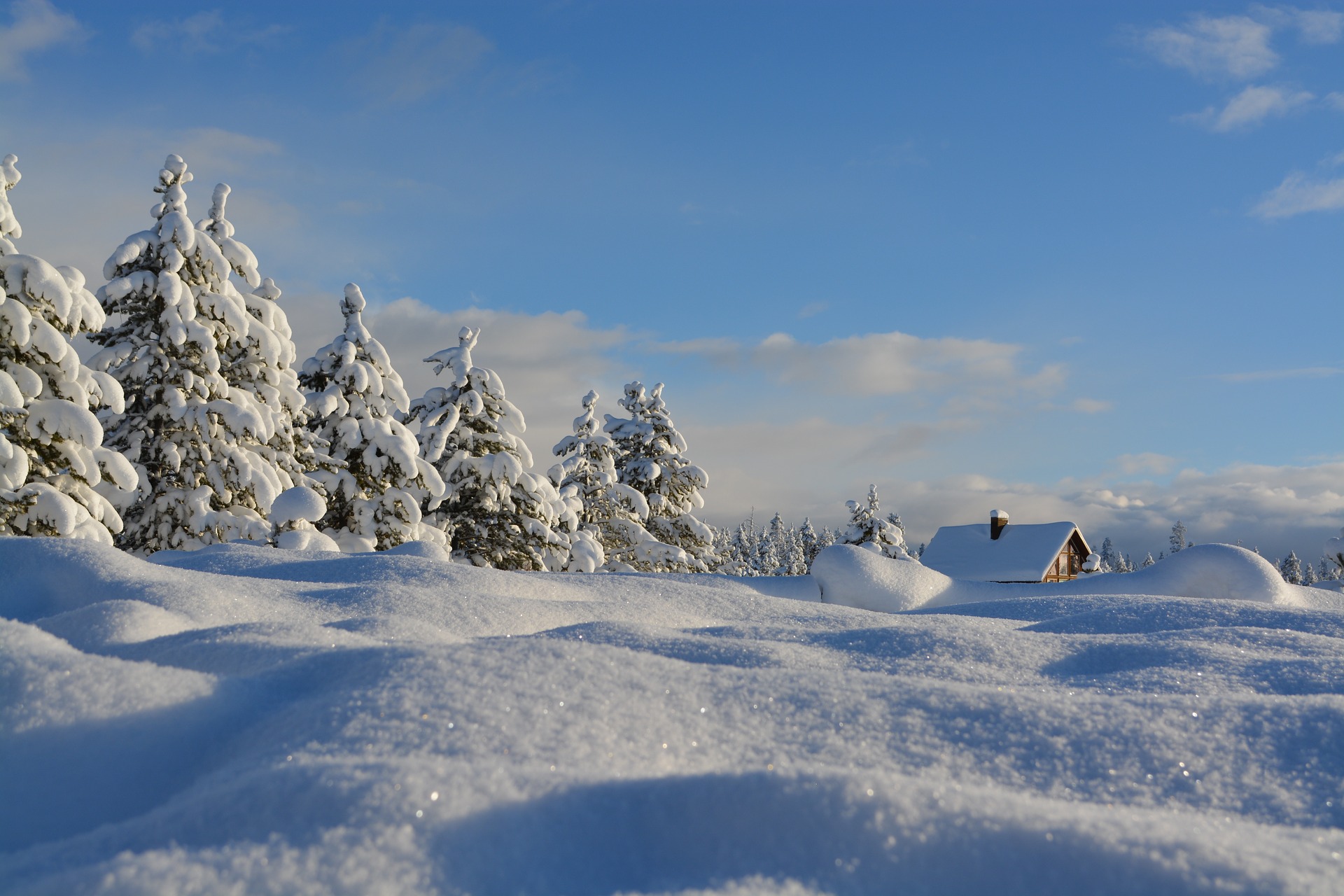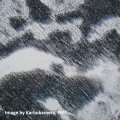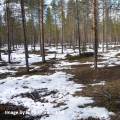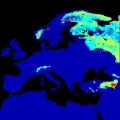- Event Weeks
- HSAF Snow Event Week 2021
HSAF Snow Event Week 2021

In the week from 22 to 26 November 2021, H-SAF in collaboration with EUMeTrain organized an Event Week on Snow. Within this week several presentations took place online during the 5 days and covered many topics on snow and ice.
The event week aimed to introduce the HSAF snow products and let the hydrological modellers get familiar with the HSAF snow products.

Session 1 - 22 November 2021
Silvia Puca: Introduction to HSAF project
In the first part of the session an introduction to the EUMETSAT HSAF project is made. The EUMETSAT Satellite Application Facility on Support to Operational Hydrology and Water Management (H SAF) started in 2005 and aims to provide remote sensing estimates of relevant hydrological parameters: instantaneous rain rate and cumulated rainfall, soil moisture at surface and in the root zone, snow cover and water equivalent. The project involves experts from 12 national meteorological and hydrological European Institutes of Austria, Belgium, Bulgaria, Finland, France, Germany, Hungary, Italy, Poland, Romania, Slovakia and Turkey, and from the European Centre for Medium-range Weather Forecast (ECMWF).
Ali Nadir Arslan: Introduction to Snow Products
The operational goal of H SAF highlights the need to provide products with a reliable measure of their accuracy, so the potential users are made aware of the advantages and drawbacks of the use of the H SAF products in their operational activities. With this aim, within the H SAF, three Validation Groups have been established: one for precipitation, one for soil moisture and one for snow products.
An overview of existing and future satellite-derived snow products will be provided.

Session 2 - 23 November 2021
Zuhal Akyurek: Optical RS Snow Products: Theory
Snow on the ground differs from most of the Earth surfaces by its high reflectance or albedo in the visible and near-infrared wavelengths (0.350 to 1 μm). For longer, the snow’s reflectance decreases significantly. In these wavelengths,snow is even less reflective than certain types of vegetation. Most of the incident radiation in these wavelengths is absorbed in the snowpack. These unique spectral characteristics are used in optical remote sensing to distinguish between snow and other types of surfaces. The numerous validation studies indicate that the satellite snow products have large snow mapping accuracy with respect to ground snow observations for cloud-free conditions, which varies between 69 and 94% in the winter seasons. The main limitation of existing optical platforms operating at a daily timescale is cloud coverage, which significantly reduces the availability of snow cover information.
In this session, algorithms used to retrieve HSAF snow products; snow mask (H31, H34) and effective snow cover area (H32, H35) from opticalsatellite data are presented. The challenges and the opportunities in retrieving snow cover mapsfrom optical data are discussed.
Niilo Siljamo: Snow detection for flatland (snow mask) by VIS/NIR of SEVIRI (H31), Snow detection (snow mask) by VIS/IR radiometry (H34) (using products from juypiter notebook) - Part I
In this session, EUMETSAT HSAF snow products H31 and H34 are explained in detail.
H31 is a full disk snow mask product for flatland areas, which is retrieved from optical imaging radiometer Spinning Enhanced Visible and Infrared Imager (SEVIRI) onboard the geostationary Meteosat Second Generation (MSG) satellites operated by EUMETSAT. MSG/SEVIRI provides continuous imaging of the earth in 12 spectral channels with a repeat cycle of 15 min. The imaging spatial resolution is 3 km in nadir and degrades to 5 km over Europe. The snow cover retrieval algorithm used in the product is based on empirical approach, which takes into account the highly variable nature of the snow-covered surface in satellite resolution. Validation results based on weather station observations(snow depth and the state of the ground observations) are very good.
Kenan Bolat: Snow detection for flatland (snow mask) by VIS/NIR of SEVIRI (H31), Snow detection (snow mask) by VIS/IR radiometry (H34) (using products from juypiter notebook) - Part II
H34 is a snow mask product, which is retrieved from optical imaging radiometer Spinning Enhanced Visible and Infrared Imager (SEVIRI) mounted aboard the geostationary Meteosat Second Generation (MSG) satellite operated by EUMETSAT. MSG/SEVIRI provides continuous imaging of the earth in 12 spectral channels with a repeat cycle of 15 min. The imaging spatial resolution is 3 km at sub-satellite point and degrades to 5 km over Europe. The snow cover mapping is based on a multi-channel retrieval algorithm. It exploits the high reflectivity of snow in the visible spectrum and the low reflectivity at shorter wavelengths. The snow cover retrieval algorithm differs for flat and mountainous regions. Considering the different characteristics of snow for mountainous and flat areas, two different algorithms are used in producing the snow products for flat and mountainous areas, and then the products are merged to have a single snow product.

Session 3 - 24 November 2021
H32 is a global daily snow mask product, which is retrieved from the Advanced Very-High Resolution Radiometer (AVHRR) onboard the polar orbiting MetOp satellites operated by EUMETSAT. Metop/AVHRR provides daily global coverage on 5 channels. The spatial resolution is 1.1 km in nadir. The snow cover retrieval algorithm used in the product is based on empirical approach which takes into account the highly variable nature of the snowcovered surface in satellite resolution. Validation results based on weather station observations (snow depth and the state of the ground observations) are very good.
H35 is effective snow cover product, which is retrieved from optical imaging radiometer AVHRR mounted aboard NOAA and MetOP satellites. The third generation of AVHRR, i.e., AVHRR/3, is a multi-spectral scanning radiometer with three solar channels in the VIS/NIR region and three thermal infrared channels. It is currently onboard to NOAA-15, -18, -19 and MetOp-A, -B, -C satellites. The operational H35 is confined to the Northern Hemisphere The fractional snow cover (fSCA) value within a pixel is estimated by using the reflectance data obtained from AVHRR spectral bands. The final fSCA product has ~1 km spatial resolution and it incorporates snow cover fraction percentage from 0 to 100% as well as cloud and water classes. The product for flat/forested regions is generated by Finnish Meteorological Institute (FMI) and the product for mountainous areas is generated by Turkish State Meteorological Service (TSMS). Both products, thereafter, are merged at FMI. A full disk H35 product is an image of 8,999 rows by 35,999 columns(i.e., 324 M pixels approximately).
During winter season, snow covers about 40 million km2 in the Northern hemisphere. Snow is a vital water resource in many regions of the world. Climatic changes, Earth’s energy balance, water resources are strongly affected by the presence of snow. Knowledge of the amount of snow water equivalent from year to year is essential to estimate the effects of snow melt run-off. Knowing the snow characteristics helps to improve weather forecasts, to predict water supply for hydropower stations, and to anticipate flooding. Microwave sensors such asradiometers and radars are often used because of their usability under varying conditions, factors like clouds, rain and lack of light do not affect the measurement, the large penetration depth into the surface with increasing wavelength, sensitive to liquid water. Understanding of the relationship between microwave signatures and snow is very important for retrieving desired snowpack parameters such as snow density, snow water equivalent and snow wetness.
In this session, we will present a general introduction to microwave remote sensing covering radiometry, characteristics, microwave sensors and applications. We will also provide information on algorithms used to retrieve HSAF snow products from microwave sensors.

Session 4 - 25 November 2021
The Snow Water Equivalent (SWE) is a parameter that describes the water content of snow mass. If snow would melt in its place the SWE tells the depth of the resulting water layer. Spaceborne microwave radiometers are well suited for the detection of SWE. Even though the spatialresolution of radiometer data is rather coarse (tens of kilometres) a polar orbiting satellite can cover most of the globe in 24h period. Unlike optical instruments radiometer depends only on natural thermal radiation of objects and doesn’t require illumination from sun. In addition, radiometers are quite insensitive to weather phenomena. The EUMETSAT H SAF SWE products H13 and H65 are described in detail in this presentation. The products are merged products containing Finnish Meteorological Institute (FMI) contribution for flat lands and Turkish State Meteorological Service (TSMS) contribution for mountainous areas. Both products use Helsinki University of Technology (HUT) model as basis for the estimates. The FMI algorithm is a data assimilation algorithm combining ground-based snow depth measurements with spaceborne derived SWE estimates and the TSMS algorithm uses modified HUT model for mountains. The nominal resolution for H13 is 0.25° and for H65 25 km. Product H13 is provided for Europe in so called H-SAF area [25-75°N lat, 25°W-45°E long]. The upcoming product H65 will provided for Northern Hemisphere in EASE2 format. The products are validated against independent SWE snow course measurements.
In thissession, practical examples of how to use the H13 product will be presented using Jupyter notebook.
Information on snow properties is of critical relevance for a wide range of scientific studies and operational applications, mainly for hydrological purposes. However, ground-based monitoring of snow dynamics is a challenging task, especially over complex topography and under harsh environmental conditions. Remote sensing is a powerful resource providing snow observations at a large scale.
In this session, the validation of the products will be discussed in detail. The presentation will begin with a brief recap on the various snow product types: snow detection, Snow status (D/W), Fractional SC and SWE. Some of these products are over European areas, whereas the new products developed during CDOP3 are global products of full disk satellite products.
Following there will be a short discussion about performances and limitations of each product, based on the Operational Reviews of the last years. Validation of these products requires a great effort due to sparse availability of snow observation, especially, over extra-European areas. Therefore, new validation strategies were developed.
In this part we will address the potential of using Sentinel-2 high-resolution imagery to validate moderate-resolution snow products supplied by the Hydrological Satellite Facility (HSAF) Project of EUMETSAT.
The consistency of Sentinel-2 observations has been assessed against both in-situ snow measurements and webcam digital imagery and they can be used as reference data (Piazzi et al 2019). We will show the comparison of HSAF products and Sentinel 2 dataset in different region of the world with different snow seasonality.

Session 5 - 26 November 2021
Increasing satellite technology offers new products for hydrological applications. The validation process is crucial for these products before they are used in operational applications. The validation of satellite data sets can be done through the direct comparison with ground truth data or a reference satellite data. Another, indirect approach consists in using these datasets in models with different complexities and assess the realism of modelled outputs (so called “Hydro Validation”). EUMETSAT H SAF project provides daily snow products on snow recognition, fractionalsnow cover, snow status and snow water equivalent over complex topographies changing from flat land to mountainous areas.
In this this first part, we will discuss a blending approach to use SE-E-SEVIRI(H10) data together with Sentinel 2 and MODIS into a real-time, operational cryosphere modelling chain (S3M-Italy). We will compare open-loop simulations with simulations obtained assimilating H10 data to discuss the added value of this product for real time forecasting.
Increasing satellite technology offers new products for hydrological applications. The validation process is crucial for these products before they are used in operational applications. The validation of satellite data sets can be done through the direct comparison with ground truth data or a reference satellite data. Another, indirect approach consists in using these datasets in models with different complexities and assess the realism of modelled outputs (so called “Hydro Validation”). EUMETSAT H SAF project provides daily snow products on snow recognition, fractionalsnow cover, snow status and snow water equivalent over complex topographies changing from flat land to mountainous areas.
In this second part, daily snow cover area (SCA) and snow water equivalent (SWE) data sets derived from SE-E-SEVIRI(H10) and SWE E(H13), respectively, are evaluated over the mountainous terrain of the Upper Euphrates Basin. First the impact of the snow cover area product is analysed and then hydro validation of both data sets are assessed through conceptual models SRM and HBV. Moreover, since the assimilation of snow products improves snow states of the models, lead time runoff and snow state forecast performance will be presented.
